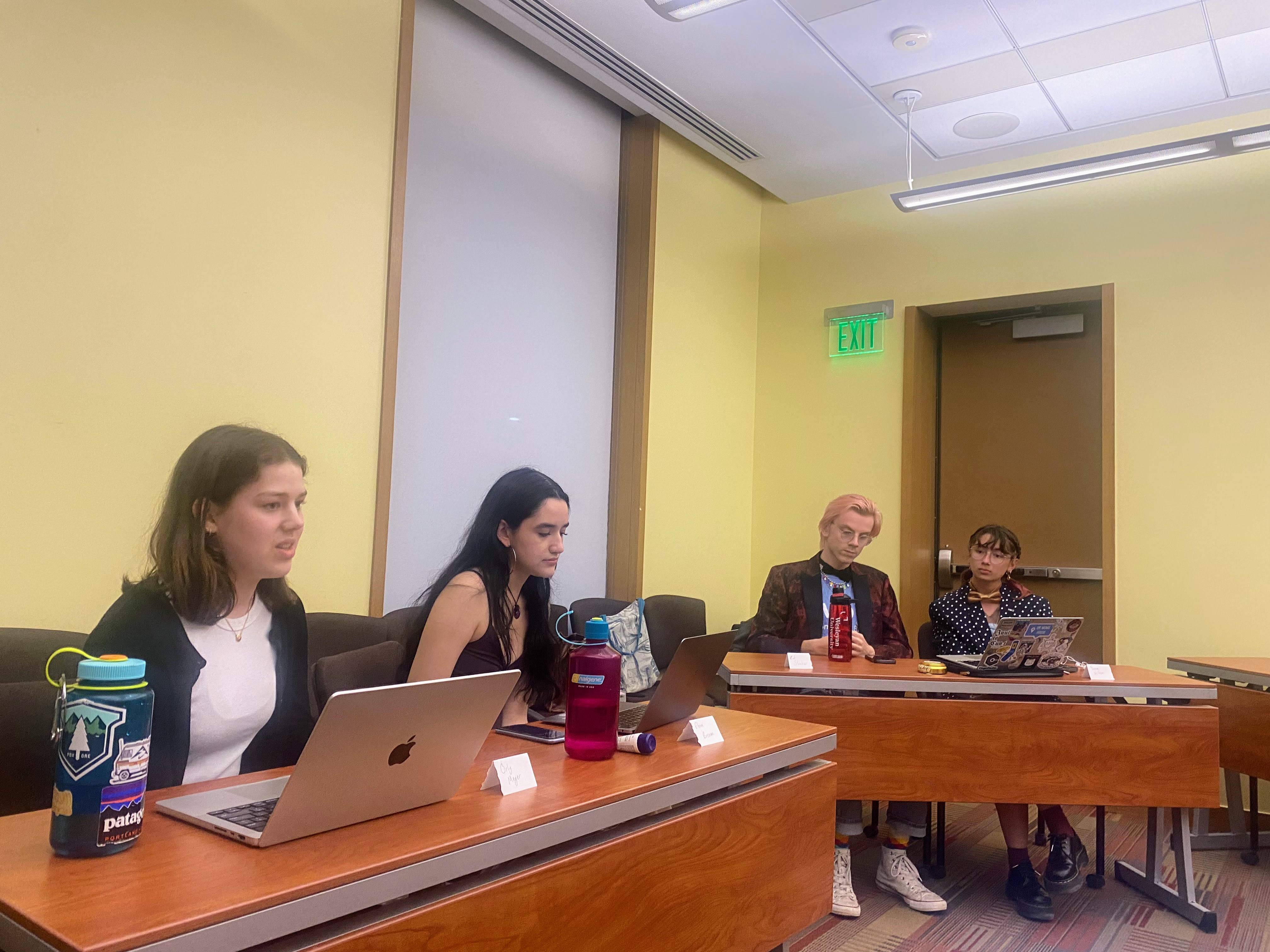
The Wesleyan Student Assembly (WSA) passed Amendment 8.44 at its meeting on Sunday, April 23, establishing the Student Accessibility Committee (SAC) as a subcommittee under the existing Equity and Inclusion Committee (EIC). The amendment, which aims to create a centralized resource to address and resolve issues of accessibility on campus, was sponsored by senators Jonghwa Kim ’25 and Paul Quach ’26.
Members of the committee will coordinate with other bodies across campus that address facets of University life related to disability and accessibility, including the Campus ADA (Americans with Disabilities Act) Committee, Facilities, the Office of Residential Life (ResLife), Accessibility Services in the Office of Student Affairs, and the Office of Student Involvement. The SAC also plans to host events to facilitate discussion with the greater Wesleyan community and make recommendations to the administration as to how it should address accessibility issues. Per the amendment, the SAC will be made up of two members of the EIC, nominated by the EIC chair, as well as one senator from either the Academic Affairs Committee, Community Committee, Student Budget Committee, or Student Life Committee, to be elected by the WSA’s General Assembly. The SAC will first convene at the start of the Fall 2023 semester.
Kim and Quach explained that they first began working on a proposal for a WSA subcommittee to address accessibility issues in late February. The idea arose from conversations the two of them had around issues that Kim, who is legally blind, has faced around campus.
As Kim explained, many parts of day-to-day life across campus can be far more challenging for disabled students, in ways their peers may not consider. As a recent personal example, he cited the example of the recent construction to repair pavement tiles around the Usdan University Center, which has made getting around campus far more difficult for him than for fully sighted students who can see the safety tape from further away and adjust their route. Kim also noted that while more recently constructed buildings have braille signage, many older ones on campus do not, making navigation more difficult.
Another motivating factor for creating the SAC was that the University currently lacks a centralized body that can address the many varied aspects of accessibility, according to Kim and Quach. Special academic accommodations, for example, fall under the purview of Accessibility Services, while braille signage in buildings is the concern of Facilities, and ResLife is in charge of ensuring disabled students have accessible student housing.
Kim recalled that last year, he had been a part of a student group for disabled students, but the group became inactive when its leaders graduated. His goal with the SAC, he explained, was not only to put a new focus on accessibility within the WSA but to create a go-to resource for students across campus facing accessibility-related challenges.
“A core focus of this was that if people outside the WSA have concerns, we want them to bring it to us,” Kim said.
The SAC also aims to be a pathway for student concerns to be conveyed to administrators.
“My personal goal for this committee is to have conversations with groups that are already doing this work on campus and bring them to administrators more directly,” Quach said.
The impetus for establishing the SAC as an independent subcommittee, rather than simply bringing up more accessibility issues with the EIC, was to allow greater focus to be given to accessibility, Kim explained.
“It would allow for less distraction from the other subcommittee’s work,” Kim said. “Right now, it’s very difficult to bring up accessibility in the meetings that we have because their focus is not directly on accessibility.”
With a subcommittee devoted solely to issues of accessibility, Kim and Quach hope that the SAC will be more able to affect change.
“[The SAC] will be fully focused on accessibility,” Quach said. “They won’t be busy with other [WSA] tasks and agenda items, they can really sit down and evaluate solutions.”
The amendment that establishes the SAC does not offer a comprehensive definition of which issues fall under the purview of accessibility. Both Kim and Quach noted that the term can cover a wide range of situations, from physical disabilities to mental illnesses and other health conditions. Rather than strictly define which issues the SAC can address and risk excluding certain issues and individuals, their aim is for the SAC to be able to face all the challenges that may arise.
“There’s a lot of [disabilities] that are really important, but less visible,” Kim said.
Oscar Kim Bauman can be reached at obauman@wesleyan.edu.



Leave a Reply